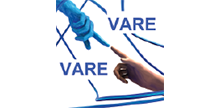Lessons learned about language learning and extended reality frameworks
- ab Department of Informatics, Bioengineering, Robotics and System Engineering, University of Genova, Italy
Cite as
Iacono S., Vercelli G. (2019). Lessons learned about language learning and extended reality frameworks. Proceedings of the 5th International Conference on Virtual and Augmented Reality in Education (VARE 2019), pp. 51-55. DOI: https://doi.org/10.46354/i3m.2019.vare.008
Abstract
The knowledge of a second language is an obligation in educational systems of the European Community for many years and the quality of teaching and learning, especially in Italy, could be largely improved for a better outcome. Methods like Game-based Learning and Gamification could improve and change this outcome, combined with new tools used as educational technology in an immersive context. This paper presents some lessons learned from the adoption of VR / AR within two applications related to language learning. In this context, being immersed in an engaging and fun simulated situation is a good way to practice language conversations. In the last few years the great clamor of new VR / AR devices (HMD, controller, tracker) promotes the creation of new frameworks of extended reality for language learning.
References
- Azuma, R. T. (1997). A survey of augmented reality. Presence: Teleoperators & Virtual Environments, 6(4), 355-385.
- Bilton, N., 2015. Why Google Glass Broke. Available from: https://www.nytimes.com [accessed 14 May 2019]
- Byram, M., 1992. Foreign language learning for European citizenship. Language Learning Journal, 6(1), 10-12.
- Chapelle, C., (2001). Computer applications in secondlanguage acquisition: Foundations for teaching, testing and research. Cambridge: Cambridge University Press.
- Cosimi S., 2016. Gli italiani? Don't spik english. Sloan:«Fate troppa teoria». Available from:
https://www.vanityfair.it [accessed 14 May 2019]. - Deterding S., Dixon D., Khaled R. and Nacke L., 2011.“From game design elements to gamefulness:defining ‘gamification,’” in Proceedings of the 15th International Academic MindTrek Conference: Envisioning Future Media Environments, New York, NY, USA, pp. 9–15.
- Dörnyei, Z., Henry, A., & MacIntyre, P. D. (Eds.)., 2014. Motivational dynamics in language learning (Vol.81). Multilingual Matters.
- Du Sert, O. P., Potvin, S., Lipp, O., Dellazizzo, L., Laurelli, M., Breton, R., ... & Boukhalfi, T., 2018.
Virtual reality therapy for refractory auditory verbal hallucinations in schizophrenia: a pilot clinical trial. Schizophrenia research, 197, 176-181. - EduPlacements, 2018. Il bilinguismo in Italia: pratica comune o lontana chimera?. Available from:http://eduplacements.com [accessed 14 May 2019]
- EF Education First Italia, 2018. EF EPI report 2018. Available from: https://www.ef-italia.it [accessed 14 May 2019]
- European Parliament, 2004. Individual and Collective rights – Free movement of persons. Available from:http://www.europarl.europa.eu [accessed 14 May 2019]
- Gaudiosi J, 2015. Here's why hospitals are using virtual reality to train staff. Available from:
http://fortune.com [accessed 14 May 2019] - Hsu, T. C., 2017. Learning English with augmented reality: Do learning styles matter?. Computers & Education, 106, 137-149.
- Iacono S., Vercelli G., Bellanti E. and Corsi A., 2018. A lesson learned about gamification and engagement in a master degree course. Proceedings of ICERI2018 Conference 12th-14th November 2018, Seville, Spain.
- International Society for Presence Research, 2000. The Concept of Presence: Explication Statement. Available from: https://ispr.info/ [accessed 14 May 2019]
- Koster, R. (2013). Theory of fun for game design.O'Reilly Media, Inc.
- Lessiter, J., Freeman, J., Keogh, E., & Davidoff, J., 2001. A cross-media presence questionnaire: The ITCSense of Presence Inventory. Presence:Teleoperators & Virtual Environments, 10(3), 282-297.
- Lin, T. J., & Lan, Y. J., 2015. Language Learning in Virtual Reality Environments: Past, Present, and Future. Educational Technology & Society, 18 (4),486–497.
- Martindale, J, 2017. PlayStation VR dominates thirdquarter VR headset sales. Available from: https://www.digitaltrends.com/ [accessed 14 May 2019]
- McGonigal, J., 2011. Reality is broken: Why games make us better and how they can change the world. Penguin.
- Noels, K. A., Pelletier, L. G., Clément, R., & Vallerand, R. J., 2000. Why are you learning a second
language? Motivational orientations and selfdetermination theory. Language learning, 50(1), 57-85. - Nushi, M., & Eqbali, M. H. 2017. Duolingo: A Mobile Application to Assist Second Language Learning. Teaching English with Technology, 17(1), 89-98.
- Oxford, R., & Shearin, J., 1994. Language learning motivation: Expanding the theoretical framework. The modern language journal, 78(1), 12-28.
- Smith A. & Smith K., 2012. Cross-Situational Learning. Encyclopaedia of the Sciences of Learning. 15.2029-2049.
- Werbach, K., & Hunter, D., 2012. For the win: How game thinking can revolutionize your business. Wharton Digital Press.
